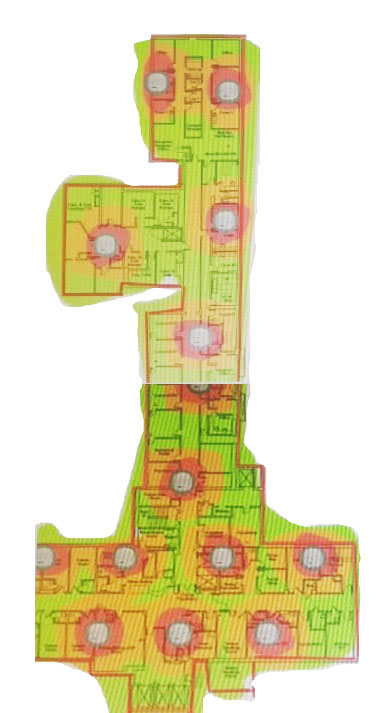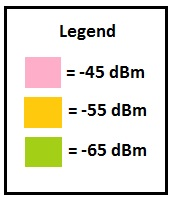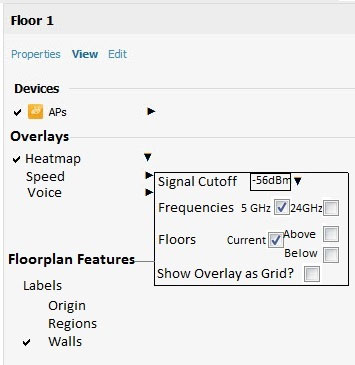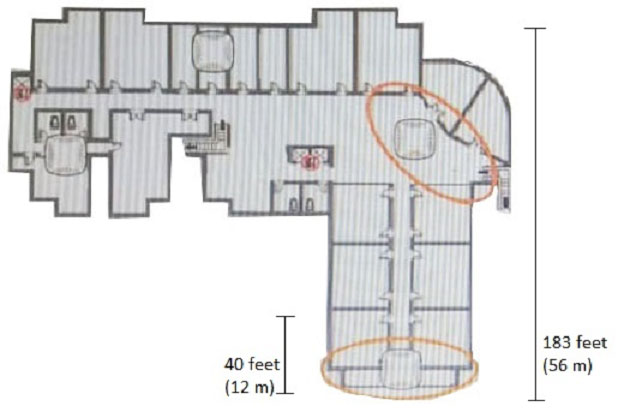


A hospital needs an upgrade to 802.11ac for its wireless network. The wireless network supports:
✑ wireless medical devices
✑ medical staff voice communicators
✑ laptops in nurse stations
✑ medical staff tablets
✑ visitor and patient personal devices
All of these devices support both the 2.4GHz and 5GHz band. Assuming about a max throughput of 150 Mbps per AP, the hospital would like to support about 4
Mbps per client.
The architect has used VisualRF to plan the AP placement on one of the floors, which the hospital expects will need to support about 800 wireless devices. The exhibits show heatmaps from this plan. The architect also plans to deploy APs in stairwells between floors.
How well does the plan meet the requirements?


